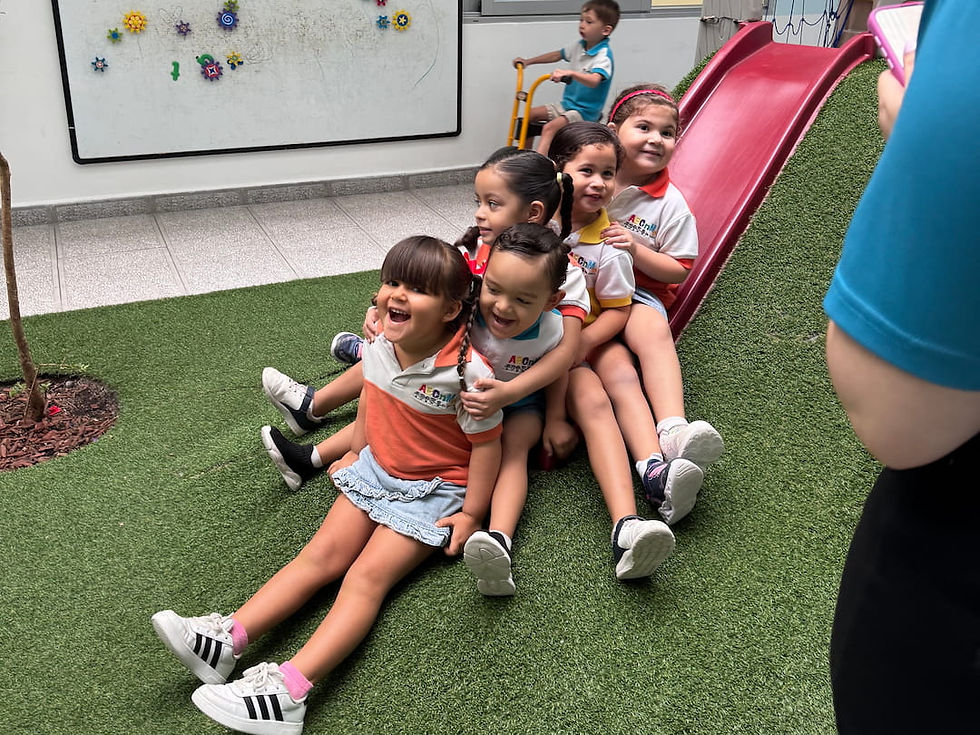Fine and Gross Motor Skills
- coordinacion886
- Sep 2, 2022
- 2 min read
Updated: Jan 26, 2023

Most of the time we have listened people talking about motor skills in children, but what is it and why is it really important?
Motor skills is the coordination of muscles, bones and nerves to produce specific movements with different parts of our body. It is divided into two parts: Fine Motor and Gross Motor.
Gross motor skills is children's ability to make big movements with their bodies, such as waving an arm or lifting a leg. In the children’s first years, we are sometimes asked if the baby holds his head or if he already sits, since each one of these activities are part of their development of gross motor skills.
Babies develop gross motor skills first, for example since the moment they begin to held their head. Then they learn to move their arms, sit and gradually manage to crawl. Parents or caregivers should pay close attention to the early stages of the baby, because the proper development of each of these movements allow their children to carry out activities at school, work, home and in their day to day activities. In order to perform these movements, proper coordination and function of muscles, bones, and nerves are required. Jumping, running, playing in the park, going up and down the stairs, and riding the bicycle are some activities that can be done to work their gross motor skills.
Fine motor skills are defined as the ability to make movements with the smallest muscles of the body. That is, the development of the muscles of their hands, wrists and fingers. This requires eye-hand coordination and also children’s attention and concentration. Fine motor skills begin to develop since 12 months of age.
The proper development of fine motor skills is of utmost importance, as it allows the child to carry out their day to day activities independently. For example, children are able to dress, fasten buttons, put on shoes, hold a spoon, and grasp cereal using the index finger and thumb (pencil grab).
As they progress to school, children develop more fluidity in their fine motor skills. It’s important that their fine motor skills develop properly when they get to 6 years of age, since it will allow a better development in activities such as tearing, coloring, cutting, drawing, tracing and, in addition, it directly influences their learning process of reading - writing.
For this reason, when a child enters to an early childhood center, from 2 years of age, great importance is attached to fine motor skills and how they are developing.
Some activities that can be done to improve fine motor skills in children are: playing with putty, cutting, playing with Legos, taking out cards with tweezers, making paper balls, threading beads, uncorking bottles, screwing, among others. All of these activities should be practiced daily, the more you practice, the better your ability to perform fine movements.
The great development of fine and gross motor skills in children will give them autonomy and security in carrying out activities of all kinds, both at home and at school.






Comments